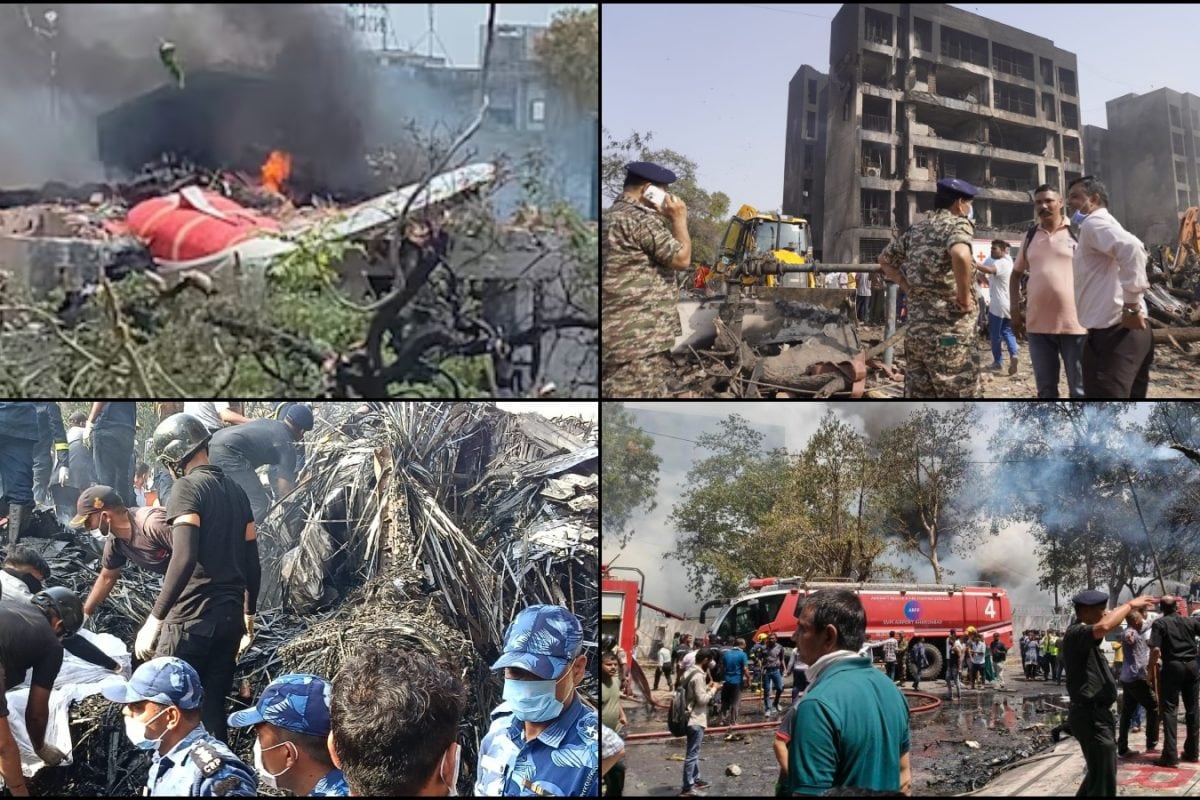

The crash of Air India Flight AI171, a Boeing 787-8 Dreamliner en route to London Gatwick, shortly after takeoff from Ahmedabad’s Sardar Vallabhbhai Patel International Airport on June 12, 2025, has prompted a multi-faceted investigation. The tragedy, which claimed the lives of 241 of the 242 people on board and also caused casualties on the ground, is being probed by the Aircraft Accident Investigation Bureau (AAIB). Several theories are currently being considered to explain the possible cause of the crash.
Bird Hit: One of the primary theories under investigation is a bird strike, or potentially multiple bird strikes. Aviation experts have pointed out that Ahmedabad airport has a known history of bird activity near the runway. A former pilot suggested the possibility of "multiple bird hits wherein both the engines have lost power." If a flock of birds was ingested into the engines during takeoff, it could have led to a significant loss of power, hindering the aircraft's ability to gain altitude. The pilot added that the aircraft appeared to lift off normally, possibly ruling out issues with takeoff speeds or loading. Some pilots have stated that the issue of excessive presence of birds has been flagged multiple times.
Double-Engine Failure: A double-engine failure is another prominent theory. While modern aircraft like the Boeing 787 are designed to fly on a single engine, a failure of both engines during the critical takeoff phase could be catastrophic, especially at low altitude. An aviation analyst noted that the aircraft's configuration "didn't look right" in footage of the crash. Aviation experts have stated that the aircraft is designed to be able to fly on one engine, so the most likely cause of the crash is a double engine failure. The most likely cause of a double engine failure is a bird strike. A dual engine flame-out due to bird ingestion or fuel contamination cannot be ruled out. Based on the body angle and trajectory, it looks like the aircraft stalled from a loss of speed.
Lack of Lift: Some experts analyzing the video footage of the crash suggest the plane struggled to gain lift. This could be related to the engine issues or other factors influencing the aircraft's aerodynamics. Minister of State for Civil Aviation, Murlidhar Mohol, said that the pilot had issued a 'Mayday' distress call, denoting a full emergency, soon after takeoff. Aviation experts said that going by the available visuals, lack of thrust in both engines and a bird hit could be among the probable causes.
Flaps and Landing Gear: The position of the flaps and landing gear is also being examined. Former NTSB Chairman Robert Sumwalt noted that video of the crash appeared to show the plane with its landing gear down and flaps up at a time when those should have been reversed. The wing flaps need to be set correctly as they extend the shape of each wing and create vital extra lift at lower speeds to enable the plane to take-off and climb effectively. There may have been some issue with the flaps. If you fly as often as I do, you know the pilots always extend the flaps down, which increases the area of the wing and gives them extra lift.
In addition to these main theories, investigators will also be looking into other potential contributing factors such as fuel contamination, mechanical failure unrelated to bird strikes, potential issues with the aircraft's throttle system, or even the possibility of human error.
The investigation is expected to be comprehensive, involving analysis of the aircraft's black boxes (flight data recorder and cockpit voice recorder), examination of the wreckage, and input from international experts. The National Transportation Safety Board (NTSB) from the United States and the Air Accidents Investigation Branch (AAIB) from the UK are assisting in the investigation.
The crash has raised concerns about air travel safety standards and has prompted calls for urgent overhauls.